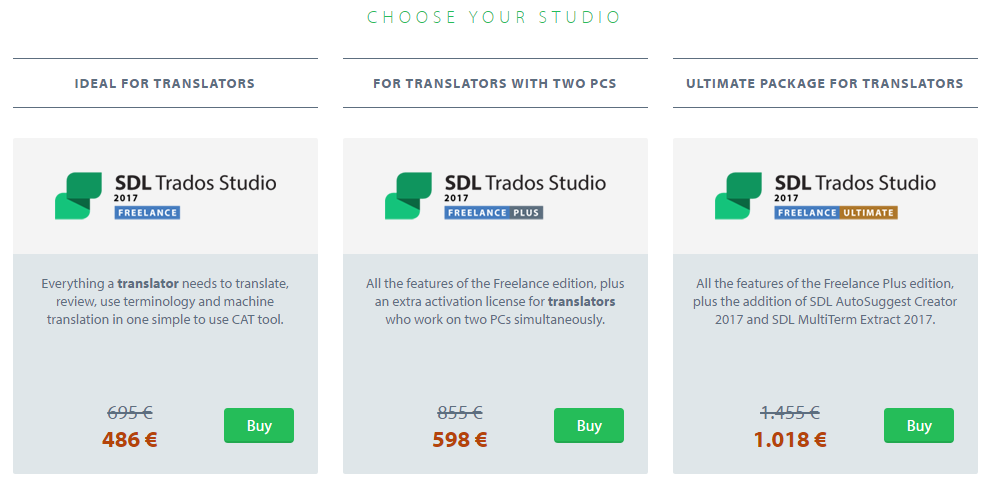
To work with an adaptive engine, all the user needs to do is create an engine and plug it into SDL Trados Studio 2017:Ĭreating an adaptive machine translation engine in SDL Trados Studio 2017 Ultimately, with this shift, machine translation and translation memory technology start converging.ġ Configuration in SDL Trados Studio 2017 This in turn means that MT technology may well be accepted by a far bigger audience than previously, as one of the biggest frustrations will start being addressed by this technology shift.
#Torrent sdl trados studio 2017 update
This is potentially a paradigm shift for the translation industry, as for the first time users can update a machine translation engine as they go along with new suggestions, which is not that dissimilar to updating a translation memory. In effect you have your own personalized machine translation engine.

What is also important here is that the translator does not have to learn something new or change their behavior the post editing process remains the same, it is just active, meaning it remembers what you have done.

The machine learns from the translator and thus errors are reduced significantly over time.Īny post-edit done by a translator is taken on board by SDL’s MT engine as it is based on an adaptive model. While speeding up the editing of new machine translated content, this also addresses one of the key concerns for using MT in a translation productivity environment – having to correct the same mistakes over and over again. In addition to reducing productivity, this causes frustration for the user as the same mistakes are repeated again and again by the engines.ĪdaptiveMT, on the other hand, addresses these issues and represents an exciting innovation in the field of machine translation, but what exactly is it and how does it help the life of a translator? How AdaptiveMT can benefit youĪ self-learning MT engine unlike traditional MT adapts in real time to the terminology and style of the translator, based on each individual post-edited segment that is sent back to the engine. Post-edits are always ignored as the MT engine, even if it has been trained, is “static" and cannot adapt to any changes the translator makes. Interestingly, of those that already use MT, 59% see MT having a positive impact for the future.Įven though machine translation has made some big strides there are still concerns and issues that have needed addressing, the most common being post-editing. Overall, 44% of respondents to our research believe that MT is driving the future of the industry. In fact machine translation has already made some credible headway in recent years. Despite the still relatively low adoption level of machine translation, MT usage is projected to rise significantly over the next 5 years. Given the controversy surrounding MT this was a little bit of a surprise for us. From this research, unsurprisingly, productivity was a key concern for people.Ī key trend raised was how can we continue to cope with the ever increasing demands to turn around translations quicker than ever? So when we asked you about the next productivity boost and where might it come from, machine translation was clearly identified.

With the release of SDL Trados Studio 2017, AdaptiveMT is a standard service, so why is now the right time to introduce this technology?įind out more about AdaptiveMT > What our research told usĮarlier this year SDL conducted the largest technology research initiative for our industry, Translation Technology Insights, with nearly 3,000 respondents. We have in one way or another been working with AdaptiveMT technology since 2005 when we filed our first self-learning machine translation patent.

The interesting thing about AdaptiveMT, often also referred to as “self-learning" machine translation (MT), is that it is not actually a new technology to us at SDL.


 0 kommentar(er)
0 kommentar(er)
